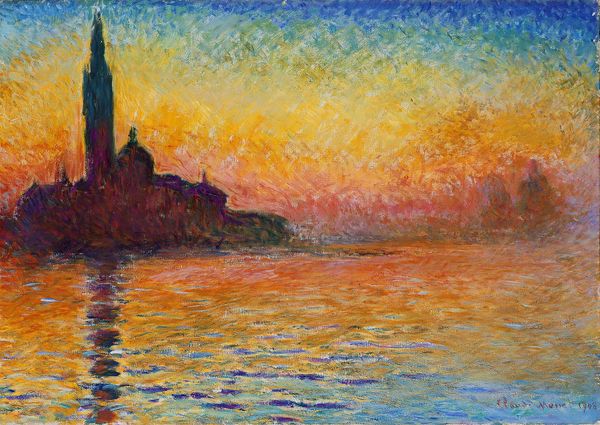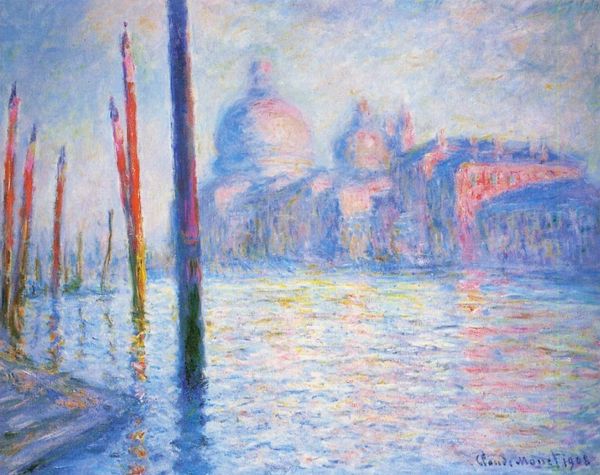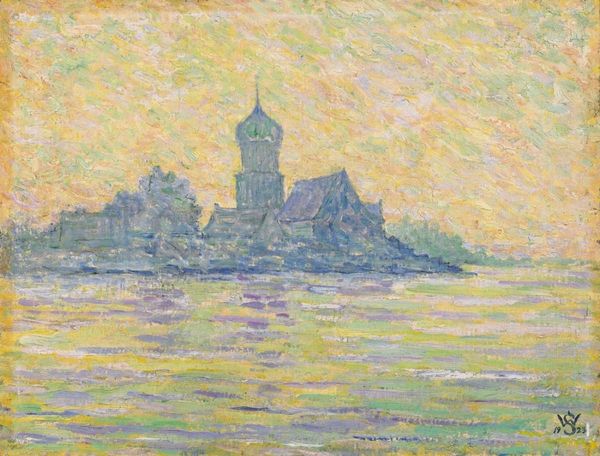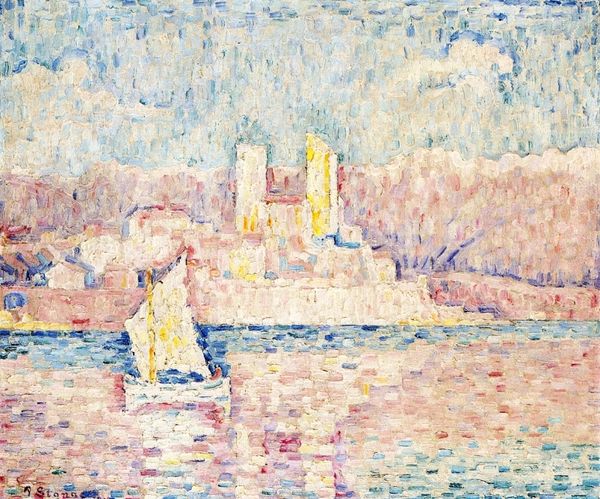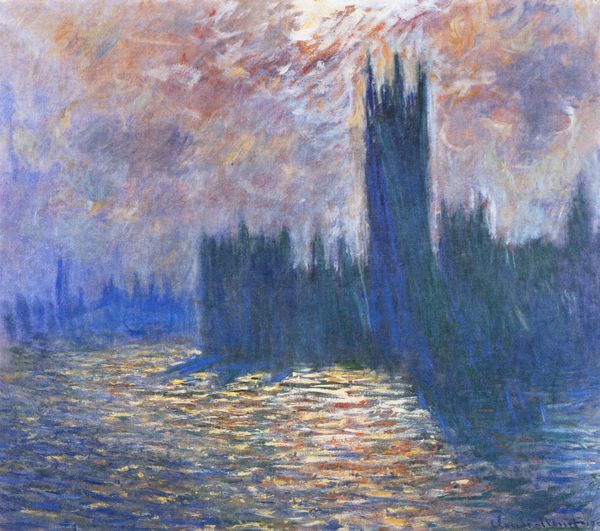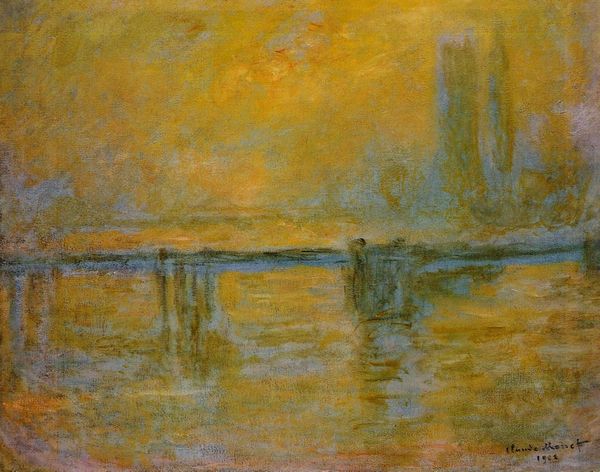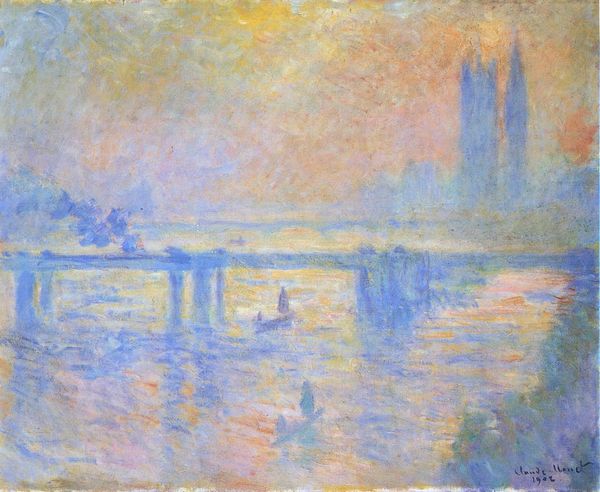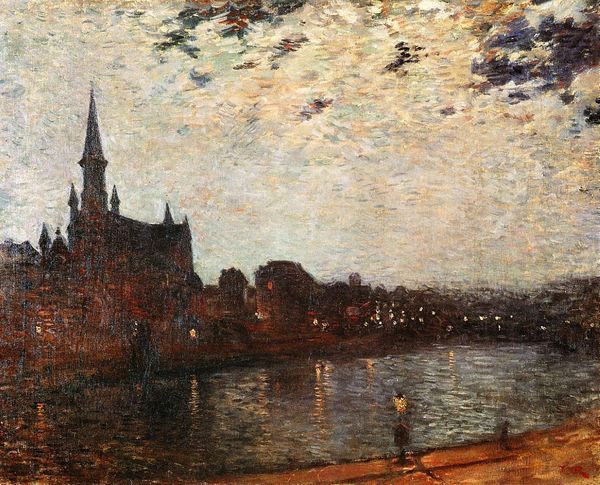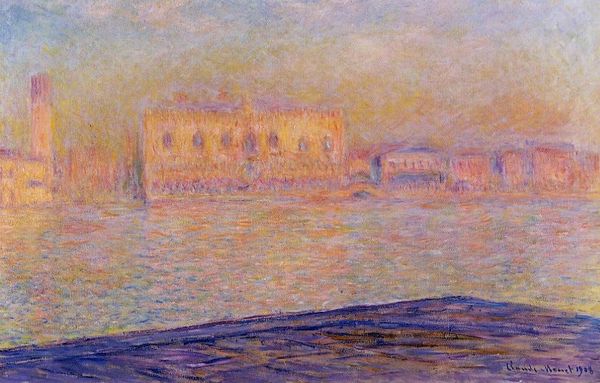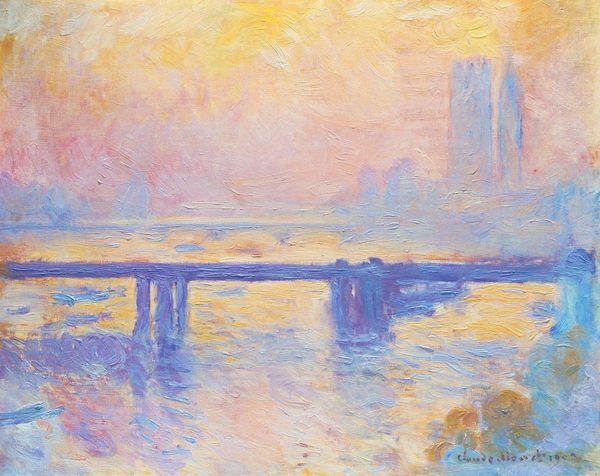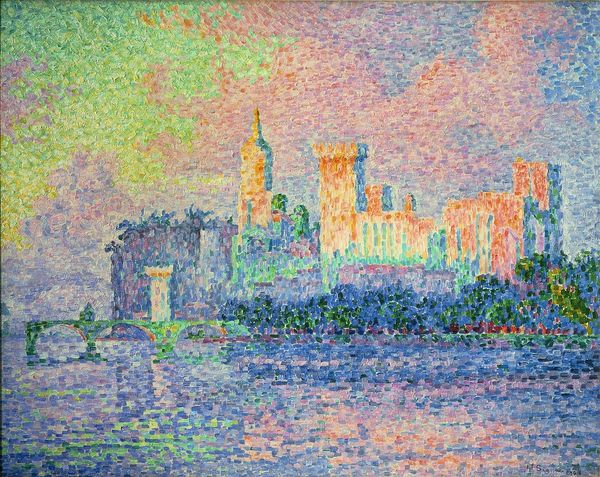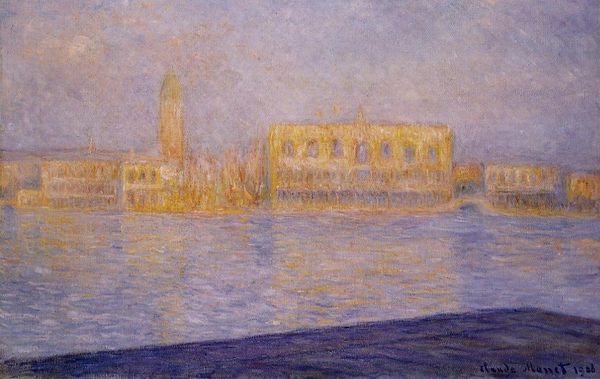
Copyright: Public domain
Curator: Editor: Claude Monet’s “Twilight, Venice,” painted in 1908 with oil paints, has such a serene and reflective quality. What is your take on it? Curator: To me, it speaks volumes about the changing landscape of artistic production. Think about it: Monet, an established painter, traveling to Venice. The availability of tubes of oil paint freed artists to leave the studio and directly engage with the environment. "Plein-air" painting wasn’t just about capturing light; it was about changing labor practices. What about the brushstrokes catch your eye? Editor: Well, I noticed the broken brushstrokes contribute to the impressionistic style, making the colours feel almost alive. The materials - the oil paints and the way they are layered on the canvas - they are quite thick in places, and it conveys a real sense of immediacy. What do you think this means about the work? Curator: Exactly. It challenges the established art world. Traditional painting academies placed so much value on meticulous blending and a smooth surface. Here, the visible strokes highlight the labor, the actual process of making the painting. Venice itself, becoming a tourist destination at the time, contributed to this narrative. Its consumable beauty fueled an artistic market. Editor: That’s a perspective I hadn't fully considered. I was so focused on the aesthetic appeal. Curator: It's easy to get lost in that, and by interrogating the context and the means of production of the image you appreciate the intent behind the artistic statement! Editor: Yes, that makes sense, examining his means helps in understanding it, that's what I got. Curator: And I've gained a fresh outlook, considering the aesthetic impact in context of that process, seeing how they play together!
Comments
No comments
Be the first to comment and join the conversation on the ultimate creative platform.
